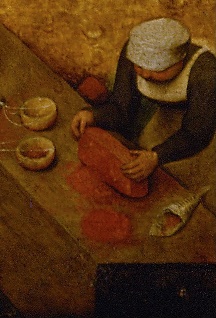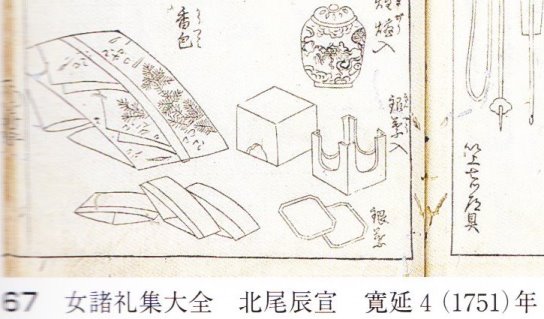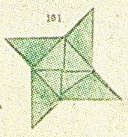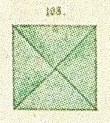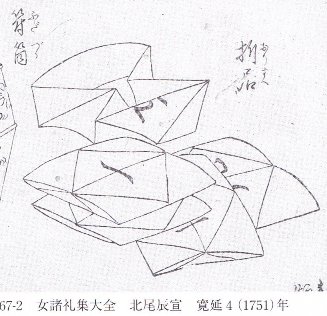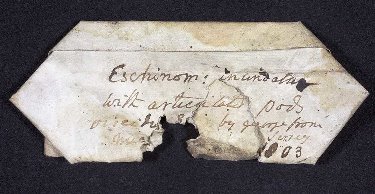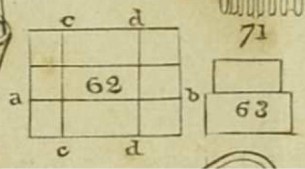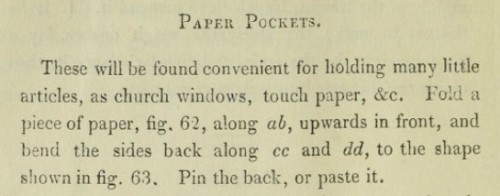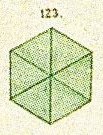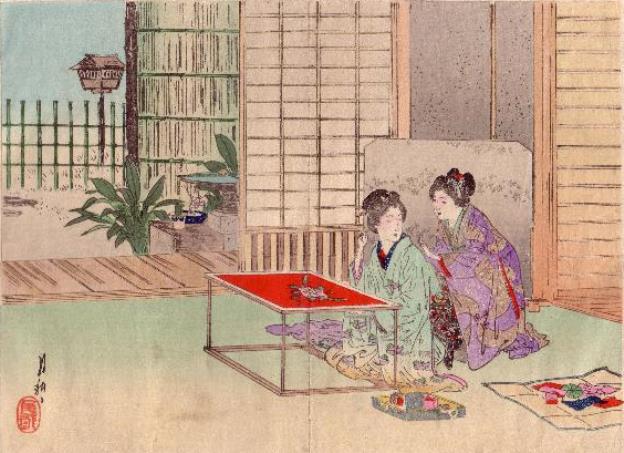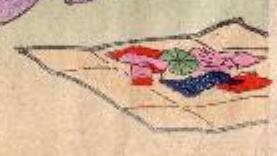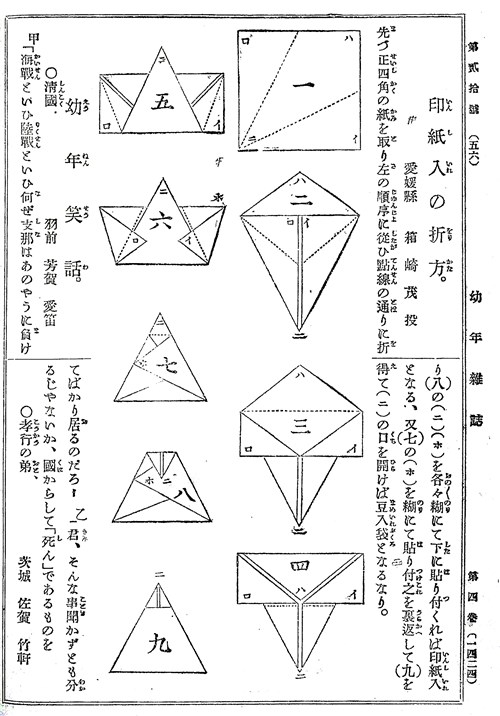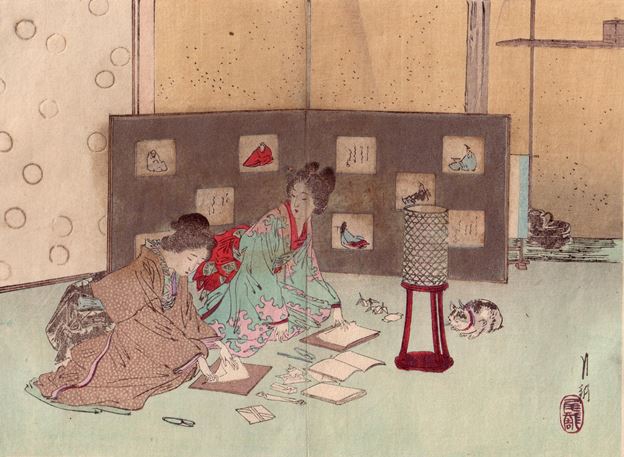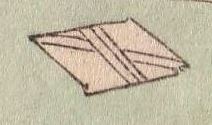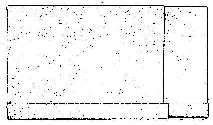| The Public Paperfolding History Project
Last updated 29/4/2024 x |
|||||||
| Paper Packets and Packaging | |||||||
| This
page attempts to record what is known about the origin
and history of folded paper packets, of which there are
many kinds. Please contact me if you know any of this
information is incorrect or if you have any other
information that should be added. Thank you. ********** The Paper Cone - 1560 onwards
********** The Basic Packet - 1648 onwards
********** The Thread Container - 1719 onwards
********** The Collapsible Box - 1751 onwards
********** The Hexagonal Packet - 1803 onwards In the early 1990's a large number of rodent-chewed Hexagonal Packets containing seeds were discovered in the attic of The Woodlands, a historic estate in Philadelphia, once owned by the botanist William Hamilton (1735–1840). Some of these bear dates. Others are labelled in the handwriting of William Hamilton himself or his neighbour William Bartram (1739-1823), who was also a plant collector. The example pictured below is dated 1803.
********** 1840 A design for 'Paper Pockets', which are essentially similar to the Basic Packet, appears in 'The School Boy's Holiday Companion' by T Kentish, which was published by Relfe and Fletcher in London in 1840.
********** The Hexagonal Sachet - 1878
********** 1891 This print by Ogata Gekko shows women doing embroidery. The various items at the bottom right are arranged on a sheet of paper which they will be folded up to form a simple packet when they are put away.
********** 1894 Diagrams for this 'Stamp Container' (Inshi-ire) appeared in 1894 in volume 4 issue 20 of 'Yonen Zasshi' children's magazine.
********** 1898 This decorative packet appears in a print by Ogata Gekko. I am indebted to David Humphries of http://www.ogatagekko.net/ for telling me that 'this print is part of a small format album titled Nihon Jo Reikshiki (loosely Etiquette for young Women). The album itself was published by Matsuki Heikichi in 1898.'
********** The Rectangular Packet - 1903 onwards This design is explained in 'La Ensenanza del Trabajo Manuel' by Pedro de Alcántara García and Teodosio Leal y Quiroga, which was published in Madrid in 1903, where it is described as 'the bag so useful in pharmacies'.
********** 1910 A page of trick packages for April Fool Gifts appears in 'Distractions Enfantines' by Marie Koenig, which was published by Librairie Hachette et Cie in Paris in 1910. These wrappings are intended to look as though they contain (top left) a cream cake, pies, St Honore, or an eclair, (top right) feathers, artificial flowers, or a ladies hat, (centre) a book, paper or chocolate, (bottom left) a picture, a complement, or sheet music and (bottom right) a cone for tobacco, powder, salt or pepper. ********** 1961 Instructions for wrapping and sealing packages appear in 'Wir Falten' by Joachim Schönherr and Gerta Schumann, which was published by Rudolf Arnold Verlag in Leipzig in 1961.
*** Sealing Bags *** ********** |
|||||||
